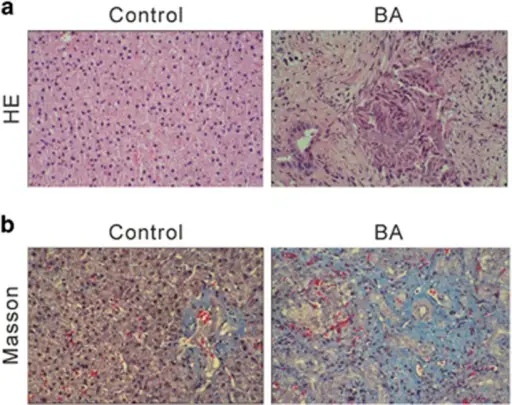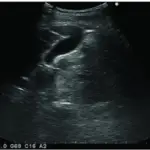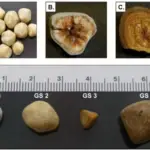Biliary atresia is a blockage in the tubes (ducts) that carry bile from the liver to the gallbladder.
What is the Pathology of Biliary Atresia?
The pathology of biliary atresia is:
-Etiology: The cause of biliary atresia is the bile ducts inside or outside the liver are not developed normally.
-Genes involved: INVS, ZIC3, AGXT
-Pathogenesis: The sequence of events that lead to biliary atresia is an obliterative fibrosing cholangiopathy of the intrahepatic and extrahepatic bile ducts.
-Morphology: The morphology associated with biliary atresia may show vauge abdominal symptoms.
-Histology: The histology associated with biliary atresia shows the expansion of the portal tracts, with edematous fibroplasia and bile ductular proliferation, with bile plugs in duct lumen. Variable multinucleate giant cells, bilirubinostasis, and hemopoiesis may also be seen.
How does True Biliary Atresia Present?
Patients with biliary atresia typically are female at the age range of two to six weeks. The symptoms, features, and clinical findings associated with biliary atresia include a yellowish coloration of the skin and whites of the eyes (jaundice).
How is True Biliary Atresia Diagnosed?
True biliary atresia is diagnosed with ultrasonography, biochemical liver function tests, viral serology, and a percutaneous liver biopsy.
How is True Biliary Atresia Treated?
True biliary atresia is treated with surgical intervention such as the Kasai procedure.
What is the Prognosis of True Biliary Atresia?
The prognosis of true biliary atresia is fair.



